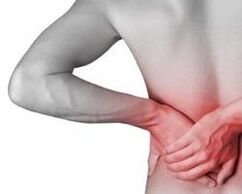
Prostatitis is an inflammatory process that develops in the prostate gland.Theoretically, every man has the risk of getting sick independently of age.
But the most susceptible to men who are influenced by the following factors:
- Sedentary lifestyle;
- Long -term sexual abstinence or, on the contrary, excessively active sex life;
- Frequent constipation.Please note that prostatitis can only cause regular stool disorders and not that the constipation arise;
- Hypothermia.To obtain prostatitis, it is not necessary to swim in icy water for hours, just sit on a cold stone or be in the cold in unsuitable clothes for a long time;
- Chronic inflammatory diseases (for example chronic bronchitis) or a focus not detected of the infection in the body (caries, tonsillitis);
- Chronic and acute urological or transferred to sexual transmission (urethritis, gonorrhea);
- Sedentary work.First of all, these are those who are forced to sit constantly at work, without the opportunity to get up and lengthen (drivers, computer operators);
- Any conditions that can inhibit the body's immune system.These include lower or insufficient nutrition, physical and emotional overload, constant lack of sleep, chronic stress).
All the above factors become particularly dangerous if the age of a man exceeds 50 years.In fact, at this age, hormonal background changes have significantly decreased, various diseases appear and, moreover, few men at this age guide an active lifestyle.It is for these reasons that all men over the age of 50 have to visualtically visualize the urologist once every six months.
How does the disease start?
As a rule, the first sign of prostatitis development is a tool or even painful during urination.Sometimes you have to get up several times a night to go to the bathroom.Few people seek a doctor at this stage of the development of the disease, although in this phase the treatment will be short and effective.
After some time, acute cuts will appear, pull or pull pains in the pubic area or in the perineum, sometimes the pain radiates to the penis or an area of the anus.Station becomes frequent and painful, urine becomes much more muddy.Pain may appear in the defecation process.
Subsequently, body temperature can increase, sometimes men notice the release of drops of white fluid translucent from the urethra.As a rule, most men are looking for a doctor during this period of illness.
What happens if you don't take prostatitis?
If, after the symptoms described above, do not consult a doctor and not start treatment, the disease will progressed further.The temperature can rise at 40 degrees, the pain becomes very strong, the urination becomes very painful, the outflow of the urine is disturbed (it flows from the urethra with a thin flow or drops).Furthermore, prostatitis does not treat, the greater the probability of delay of acute urination and the development of acute renal failure.A timely exam is also necessary, since the symptoms similar to the prostate are also available with cystitis and prostate cancer.
Diagnostics
After contacting the urologist, a study on the prostate is conducted through the rectum, as well as an analysis of the secretion of the prostate gland.This procedure is not very pleasant and sometimes painful, especially in the subsequent stages of the disease.Sometimes that's why men don't want to go to the doctor.
But in fact, before you contact the exam, the less painful.In addition, the same palpation of the prostate is already a treatment, as it helps to eliminate stagnation.
In the laboratory, the secrets of the gland are sown for the nutrients, the sensitivity of the microflora to antibiotics is determined and urinary analysis is performed.An ultrasound is also performed to confirm the diagnosis.Very often, prostatitis treatment is not difficult for a urologist, subject to timely treatment.
The early stages of prostatitis are treated at home.The patient are prescribed antibacterial drugs, bathrooms, compressed and other thermal procedures on the horse, as well as painkillers and prostate massage.The treatment is carried out for about 10 days.During treatment, you cannot eat spicy dishes and alcohol.
Signs and treatment of chronic prostatitis
In chronic prostatitis, painful pain appears in the perineum, which placulate after having walked or light physical activity, they can be seen burning during urination.A man often sleeps badly and becomes irritable.
If chronic prostatitis is not treated, it can cause inflammatory processes in the pelvic organs and even infertility.Reflexotherapy and prostate massage are also added to the above treatment.The patient is recommended to conduct a more active lifestyle, exclude spicy foods and alcohol from the diet.
Trust the doctors
Don't try to make a diagnosis alone, without a visit to the doctor.After all, only a urologist will be able to choose the optimal treatment regime based on the test results.
When caring -tagliata, take antibiotics "blindly".This can lead to the transition of the disease in chronic form.If the disease continues to progress, hospitalization may be necessary.In the hospital, the course of therapy will last 1-2 weeks and perhaps longer.
In order to prevent the development of complications, be sure to examine the urologist every six months.
Prevention
Prostatitis prevention is reduced to the following recommendations:
- If you have to be in the cold for a long time, select suitable clothes;
- Food regularly and completely;
- Lead an active lifestyle, play sports;
- With constipation, use laxatives;
- Lead a regular sex life, preferably with a permanent partner.
A very high number of men suffers from prostatitis.This article provides basic information on the disease and is also explained why the urologist must be visited regularly.
























